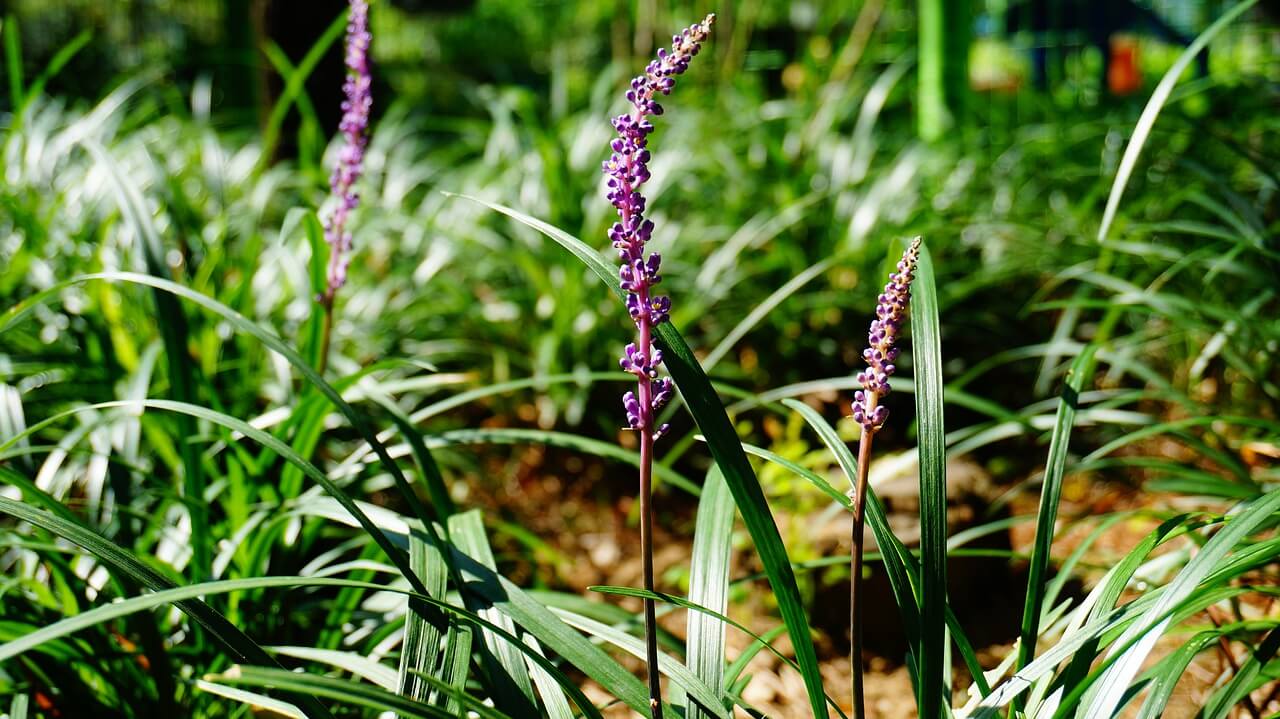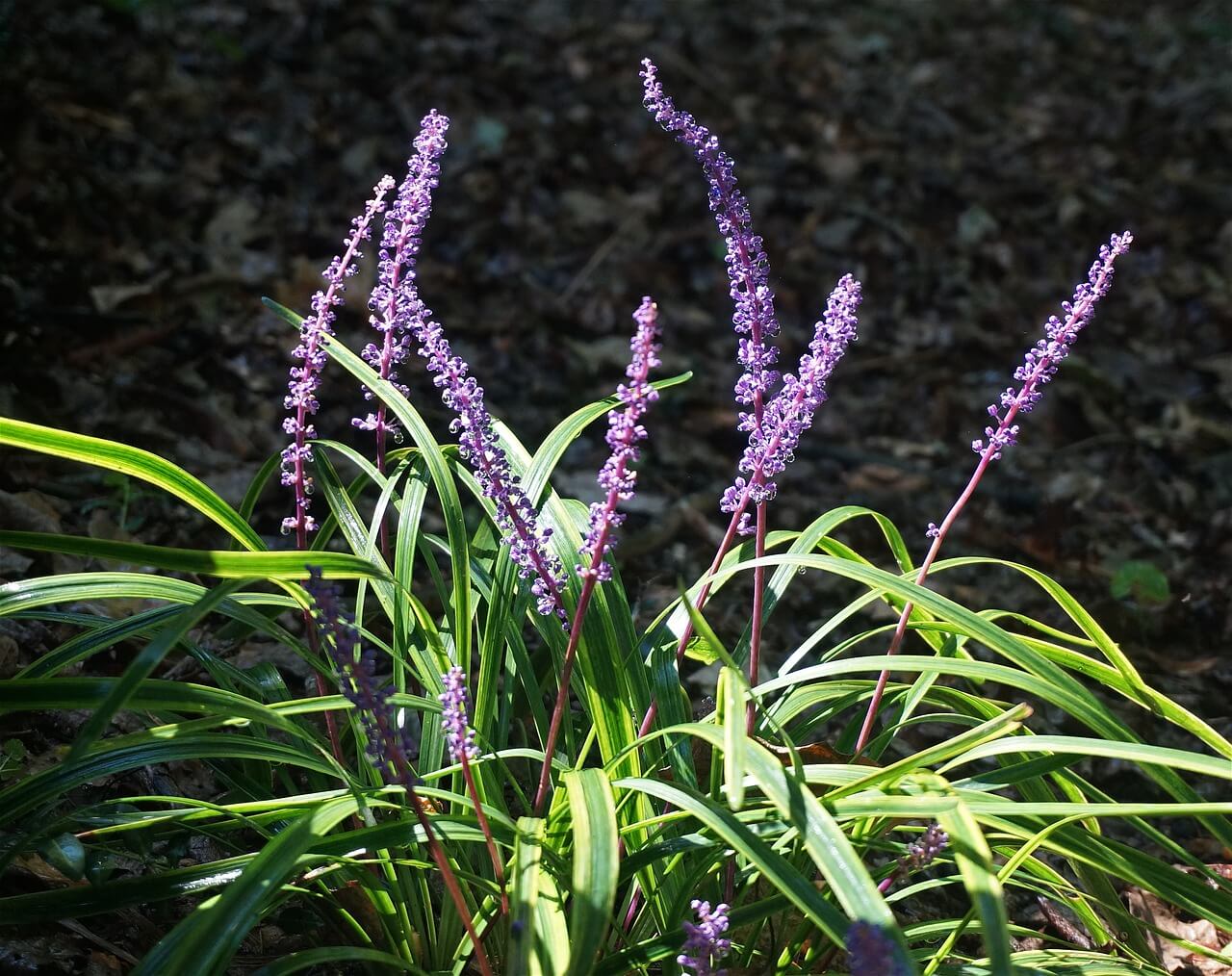Liriope is fairly hardy, but it is vulnerable to some pests. If you have been wondering what is eating my liriope, you’ve come to the right place.
What You'll Learn Today
What Diseases Attack Liriope Plants?

Anthracnose
This unpleasant sounding disease is a fungal infection, that can seriously damage the beauty and general health of your Liriope.
You should keep an eye out for the telltale reddish brown spots appearing on the leaves around late autumn, or after a period of prolonged rainfall.
This informative video will tell you everything you need to know about this problem, and what to do about it:
Scale Insect
This little beast can cause small bumps on the underside of the leaves, which is not only unsightly but can attract other pests too.
Scale insects survive by sucking the sap from various different plants, and they excrete a sugary substance called Honeydew – it is this that can attract other pests.
If your plants are overrun by these little insects in can cause poor growth and even, in extreme cases, the death of the plant.
Slugs and Snails
These guys really are the bane of any gardener! There is a lot that you can do to get rid of them, and you really should consider the non-harmful ways of doing this.
Slug pellets can be harmful to the environment, so look for alternatives where you can – beer traps, crushed egg shells and fleece around your plants are all great options.
Weather Damage
Although liriope is a very hardy plant, it won’t like certain weather conditions and it can go dormant, or even die, if it is damaged too much.
Excessive rain is the worst thing for liriope, as they don’t like having their roots soggy. If the weather is monsoon like, you may wish to consider rigging up a sort of umbrella for your liriope! The neighbours may laugh, but your plants will survive.
Although it is hardy to the cold, long periods of very cold weather will affect it adversely.
If you are the depths of a really cold winter, you should consider placing fleece or mulch around your plants to keep the roots warm and ensure that the whole plant survives.
Leaf and Crown Rot
This is a common ailment for this plant, as well as many others. It is a tricky one, because it’s hard to tell that it’s taken hold until it’s almost too late!
It is caused by Phytopthera Palmivora, a pathogen that finds it easier to take hold in places where the plants are crowded close together.
Late spring and early summer is the time to look out for this disease – check for leaves turning yellow and the base starting to rot.
If your liriope starts to show signs of this disease, you need to remove all of the affected parts, and even move the plant completely.
You should avoid planting liriope in the same place where P.P has taken hold for many years, as the pathogen can linger in the ground for a long time.
Root Rot
This is a problem for liriope, which really don’t like to sit in a bog. Most plants will object to being waterlogged for long periods, and this one is no exception!
Make sure you plant your liriope in some well draining soil, to ensure that its roots don’t sit in moisture and start to rot.
If you notice that the soil around your liriope is looking too damp,and the plant isn’t performing well, you may need to consider moving it, or adding some sand to its bed.
Why Do Leaves On Liriope Turn Yellow And Lose Stripe?

Any plant that is meant to be green should stay green, unless it is losing its foliage in the winter. Yellowing leaves are the sign of an unhappy plant!
If your liriope are yellowing during times when they should be green, you may have a problem.
- Drought. Although liriope don’t like to sit in water, a lack of water can also cause them problems.
- Over watering. Too much water sitting around the roots of the plant will stress it and can cause root rot, which in turn leads to yellowing leaves and the death of the plant.
- Iron deficiency. If your soil is too alkaline, your liriope may be short on iron and other nutrients, which can cause leaf yellowing.
- Too much sun. Although it likes a bit of light, too much sunlight wills tress out your liriope and can cause the leaves to turn yellow.
This handy guide will tell you a little more about why your liriope is yellowing, plus solutions for the problem.
How To Treat Black And Yellow Spots On Liriope?
Spots of dark colour on your liriope’s leaves may be a sign of a specific problem that attacks this plant – Anthracnose.
This type of fungus tends to appear in wet conditions, as its spores are carried around off infected plants by the raindrops.
This fungus can be devastating to liriope, as well as other plants, so the problem needs to be dealt with as soon as it appears.
- Remove all the leaves that show any signs of black, brown or rusty red spots. You may have to prune your liriope hard if the infection has taken hold.
- Rake the bed thoroughly, to remove any lingering leaves carrying thee fungus and its spores – it only takes one spore to start a big problem!
- Add a layer of clean compost of mulch to the bed, to prevent any ground dwelling spores from infecting the plants.
- You can use an organic microbial spray such as Bacillus Subtilis to control the problem. This compound will slow or kill the fungus, plus it is non harmful to other wildlife and plants in your garden.
Liriope, thankfully, is fairly resistant to most pests. However, there is always something, in the world of gardening, that wants to eat or kill your treasured plants!
Hopefully now you have some ideas on how to tackle lliriope’s unwanted visitors. Here is our guide on what to do if your liriope is overgrowing.
I don’t like using chemicals – how can I make my own natural pesticide?
Once of the best pesticides you can use is Neem oil – this is all natural and is made from a plant to help plants, so it’s got to be good! You can liberally spray it all over your plant and it will deter most pests – and do no damage to your plant whatsoever.